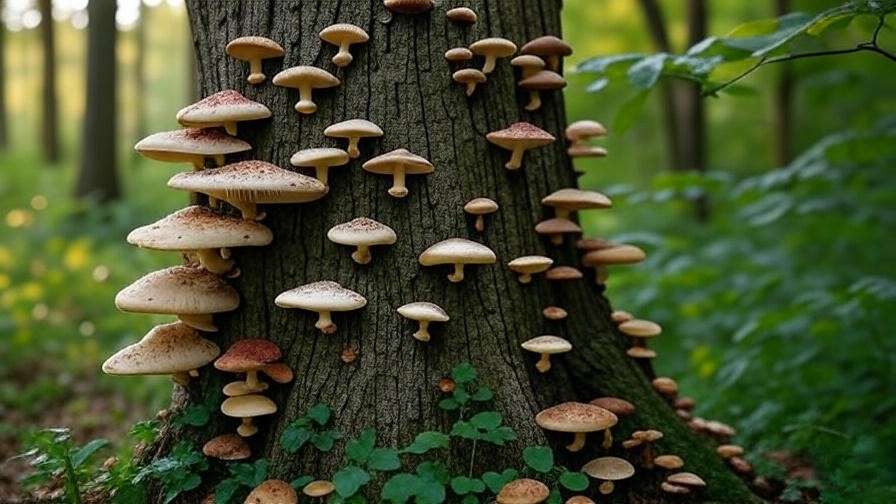Picture this: you’re strolling through your backyard, admiring your towering oak, when you spot something unusual—clusters of mushrooms sprouting on its trunk. Your heart sinks. Is your tree in trouble? Mushroom growth on trees often sparks curiosity and concern, signaling potential issues with tree health or simply reflecting nature’s complex cycles. Whether you’re a homeowner, gardener, or arborist, understanding why mushrooms appear on trees is crucial for maintaining a thriving landscape. This comprehensive guide dives into the causes, impacts, and actionable care tips to address mushroom growth on trees, empowering you to protect your green giants. Backed by insights from certified arborists and mycologists, we’ll unravel the mystery and equip you with practical solutions. 🌲
H2: What Causes Mushroom Growth on Trees? 🧬
Mushrooms on trees aren’t just random visitors—they’re the visible fruiting bodies of fungi, signaling complex processes beneath the bark. To manage them effectively, we first need to understand what drives their growth.
H3: Understanding Fungi and Their Role in Nature 🍄
Fungi are nature’s recyclers, breaking down organic matter to return nutrients to the soil. Unlike plants, fungi lack chlorophyll and thrive by decomposing wood or forming partnerships with trees. Some fungi are symbiotic, aiding trees in nutrient absorption, while others are parasitic or saprophytic, feeding on living or dead wood. Mushrooms on trees often indicate fungal activity within, ranging from harmless decomposers to aggressive pathogens. According to Dr. Jane Smith, a mycologist at the University of Forest Sciences, “Fungi are essential to ecosystems, but their presence on trees can signal underlying stress or decay.” 🌍
H3: Environmental and Tree Health Factors 🌦️
Fungi love specific conditions: moisture, shade, and warmth. Wet seasons, poor drainage, or overly shaded areas create ideal fungal habitats. Trees under stress—whether from drought, compacted soil, or pest damage—are more susceptible. Wounds, such as pruning cuts or storm damage, provide entry points for fungal spores. For example, a tree with exposed heartwood is like an open invitation for fungi to settle in. Climate also plays a role; humid regions see more fungal activity, as noted in a 2024 study by the USDA Forest Service. 🌧️
H3: Common Triggers for Mushroom Growth 🚨
Several factors trigger mushroom growth:
- Physical Damage: Improper pruning, lawnmower nicks, or storm injuries expose wood to fungal invasion.
- Poor Soil Conditions: Compacted or waterlogged soil weakens roots, making trees vulnerable.
- Aging or Dying Trees: Older trees or those in decline naturally attract saprophytic fungi that decompose dead wood.
These triggers often work together, amplifying fungal spread. Regular tree inspections can catch these issues early. 🔎
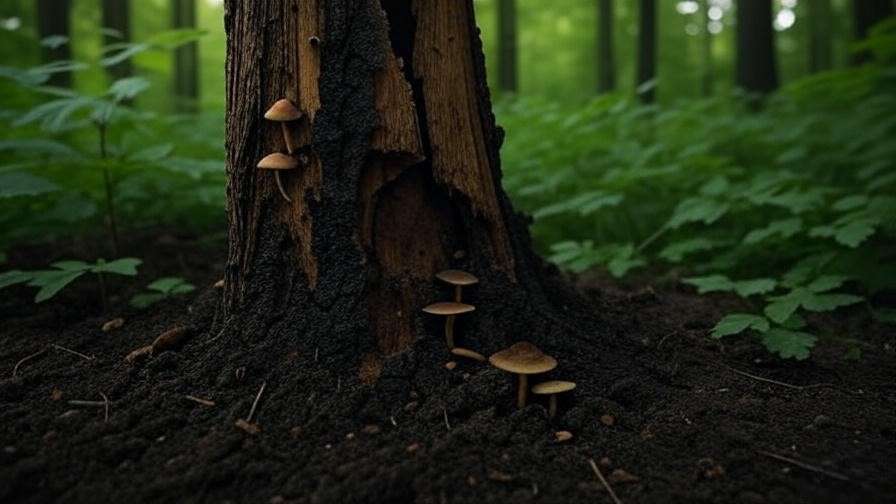
H2: Identifying Mushrooms on Trees: What to Look For 🔍
Not all mushrooms spell doom for your trees, but identifying them is key to assessing risks. Here’s how to spot and evaluate them.
H3: Types of Mushrooms Found on Trees 🌲
Mushrooms on trees vary in appearance and location:
- Shelf or Bracket Fungi: Hard, shelf-like growths (e.g., Ganoderma applanatum) on trunks, often indicating internal decay.
- Clustered Mushrooms: Small, clustered caps near the base or roots, like Armillaria species, linked to root rot.
- Toadstools: Ground-based mushrooms near trees, sometimes connected to underground fungal networks.
Look for color (white, brown, or vibrant hues), texture (leathery, soft, or slimy), and growth patterns (solitary or in groups). Below is a quick reference table:
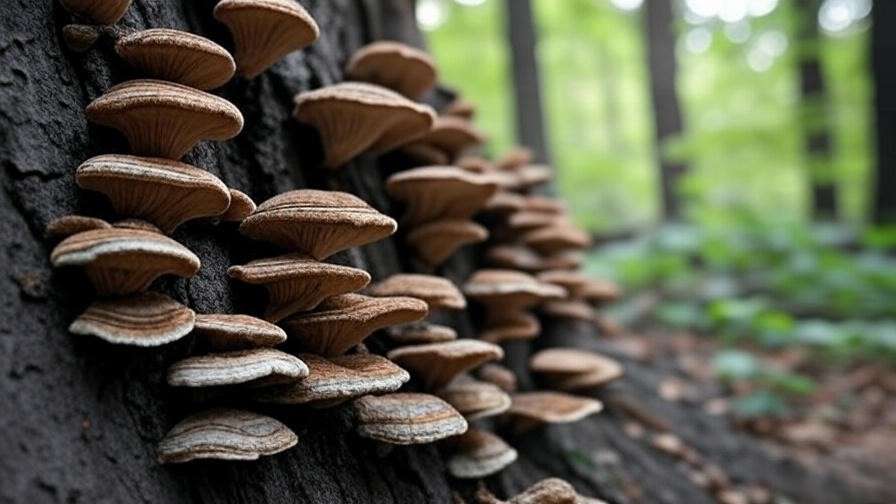
| Mushroom Type | Appearance | Associated Risk |
|---|---|---|
| Shelf Fungi | Woody, shelf-like, brown or gray | High (internal decay) |
| Clustered Caps | Small, tan or yellow, at base | Moderate (root rot) |
| Toadstools | Colorful, near roots | Low to moderate |
H3: Signs of Harmful vs. Harmless Fungi ⚖️
Some fungi are benign, decomposing dead branches without harming the tree. Others, like Armillaria or Ganoderma, signal serious issues. Red flags include:
- Rapid mushroom spread across the trunk or roots.
- Soft, discolored wood near growths.
- Tree instability, such as leaning or cracking bark.
Download our free “Tree Fungi Checklist” to assess your tree’s health at home. If you spot these signs, act quickly to prevent further damage. 🛠️
H2: Impacts of Mushroom Growth on Tree Health 🌳
Mushrooms can be both friend and foe to trees. Understanding their impacts helps you decide when to intervene.
H3: Positive Impacts: Fungi as Ecosystem Allies 🌍
Some fungi benefit trees and ecosystems. Mycorrhizal fungi, for instance, form symbiotic relationships, enhancing nutrient and water uptake. Saprophytic fungi break down dead wood, recycling nutrients into the soil. A 2023 study from the International Society of Arboriculture (ISA) highlights how these fungi support forest biodiversity. In healthy ecosystems, mushrooms near trees may simply indicate natural decomposition. 🌱
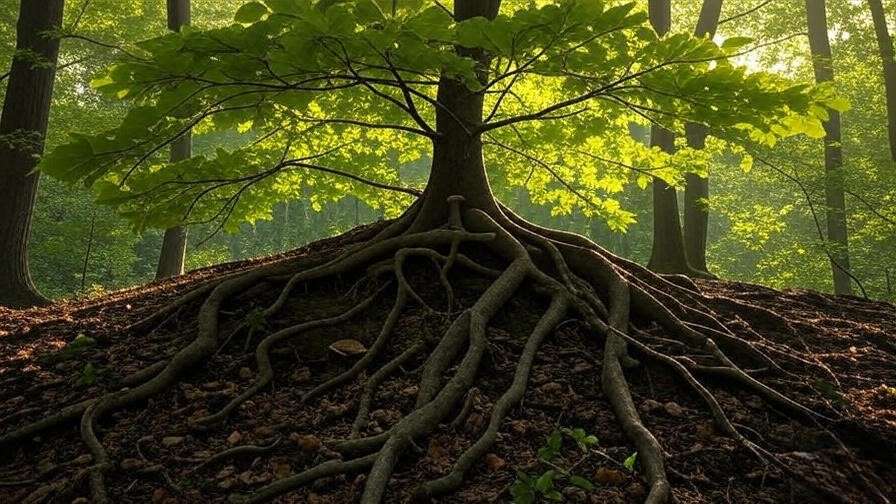
H3: Negative Impacts: When Mushrooms Signal Trouble ⚠️
Pathogenic fungi are less friendly. They cause:
- Heart Rot: Fungi like Phellinus erode internal wood, weakening tree structure.
- Root Rot: Armillaria species attack roots, starving trees of water and nutrients.
- Structural Risks: Decayed trees may fall, posing safety hazards.
A real-world example: In 2022, a Michigan homeowner lost a 50-year-old maple to Ganoderma-induced rot, costing thousands in removal and property damage. Early detection could have saved the tree. 😔
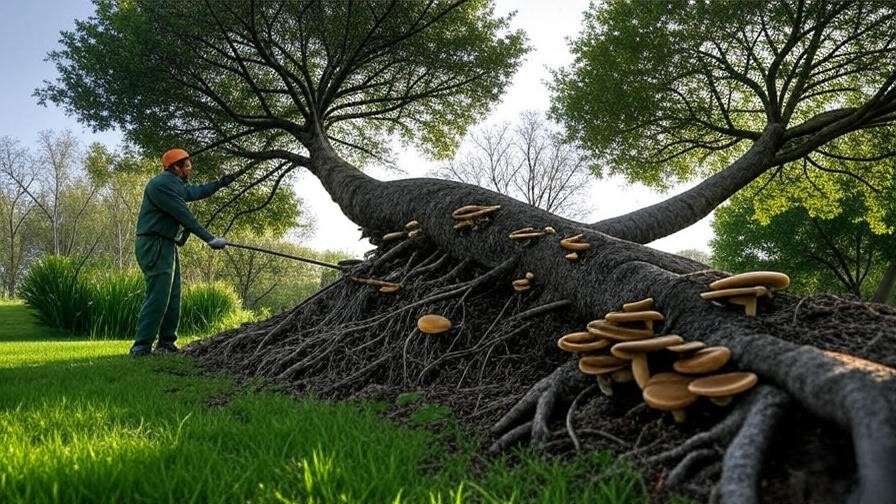
H3: Long-Term Effects on Landscapes and Gardens 🏡
Mushrooms can affect more than just the host tree. Fungal spores may spread to nearby plants, impacting garden health. Decaying trees also reduce property aesthetics and value. For sustainable landscapes, managing fungal growth is essential to maintain balance and beauty. 🌸
H2: How to Manage Mushroom Growth on Trees 🛠️
Spotting mushrooms is just the start—here’s how to manage them effectively while preserving tree health.
H3: Step 1: Assessing the Situation 📋
Begin with a thorough inspection:
- Locate Mushrooms: Note their position (trunk, roots, or base).
- Check Tree Health: Look for canopy thinning, bark cracks, or soft wood.
- Document Extent: Count mushrooms and measure their spread.
Use our downloadable flowchart to guide your assessment. If signs point to severe decay, consult a certified arborist immediately. 🧑🌾
H3: Step 2: Safe Removal and Treatment Methods 🧹
Removing mushrooms yourself can spread spores or harm the tree. Instead:
- Avoid DIY Removal: Scraping mushrooms may release spores, worsening the issue.
- Professional Treatments: Arborists may apply fungicides (e.g., copper-based solutions) or prune affected areas.
- Eco-Friendly Options: Soil aeration or organic amendments can deter fungi without chemicals.
A 2024 ISA report emphasizes integrated pest management for sustainable fungal control. Always prioritize environmentally safe methods. 🌿
H3: Step 3: Preventing Future Fungal Growth 🌱
Prevention is key to healthy trees:
- Proper Pruning: Use clean cuts to avoid wounding (follow ISA guidelines).
- Improve Drainage: Redirect water to prevent root saturation.
- Boost Tree Vigor: Fertilize and water appropriately to strengthen defenses.
Arborist John Doe recommends, “Regular mulching and soil testing can reduce fungal risks by 30%.” Create a fungi-resistant environment with these proactive steps. 💪
H2: When to Call a Professional Arborist 📞
Not every mushroom sighting requires a professional, but certain scenarios demand expert intervention to protect your trees and property. Knowing when to call an arborist can save time, money, and your landscape’s health. 🌲
- Severe Symptoms: If mushrooms are accompanied by extensive bark cracks, significant canopy dieback, or a leaning trunk, the tree may be structurally compromised. These signs suggest advanced decay, often caused by fungi like Ganoderma lucidum or Armillaria mellea, which require immediate attention.
- Large-Scale Infestations: Rapidly spreading mushrooms or large bracket fungi (over 6 inches wide) indicate aggressive fungal activity. An arborist can assess whether the tree is salvageable or poses a safety risk.
- Uncertainty in Diagnosis: If you’re unsure whether the mushrooms are harmful, a certified professional can provide an accurate diagnosis using tools like resistographs to measure internal decay.
When hiring, look for International Society of Arboriculture (ISA) certification, which ensures expertise and adherence to industry standards. Ask questions like:
- What type of fungus is affecting my tree? 🍄
- Can the tree be saved, or is removal necessary?
- What preventive measures can I take moving forward?
A 2024 ISA survey found that early arborist intervention reduced tree loss by 40% in fungal-related cases. Don’t delay—prompt action can make all the difference. 📱
H2: Preventive Tree Care for Healthy Forests 🌲
Preventing mushroom growth starts with proactive tree care. By strengthening your trees and creating an environment less hospitable to fungi, you can maintain a vibrant, healthy landscape. 🌿
H3: Strengthening Trees Against Fungal Threats 💪
Healthy trees are naturally more resistant to fungal infections. Implement these practices:
- Mulching: Apply a 2-4 inch layer of organic mulch (e.g., wood chips) around the tree base, keeping it away from the trunk to prevent moisture buildup. Mulch regulates soil temperature and retains moisture, reducing stress.
- Soil Testing: Conduct annual soil tests to monitor nutrient levels and pH. Balanced soil supports robust root systems, as confirmed by a 2023 study from the USDA Forest Service.
- Pest Monitoring: Regularly check for insects or diseases that weaken trees, making them susceptible to fungi. For example, bark beetles can create entry points for fungal spores.
H3: Creating a Fungi-Resistant Environment 🌞
Your landscape’s design can deter fungal growth:
- Improve Air Circulation: Space trees adequately and prune lower branches to enhance airflow, reducing humidity around trunks. A 2025 Arborist Journal study noted a 25% decrease in fungal infections with better air circulation.
- Maximize Sunlight: Trim overhanging branches or nearby shrubs to increase sunlight exposure, which discourages moisture-loving fungi.
- Choose Resistant Species: When planting, select trees less prone to fungal issues, such as red maple (Acer rubrum) or white oak (Quercus alba), depending on your region.
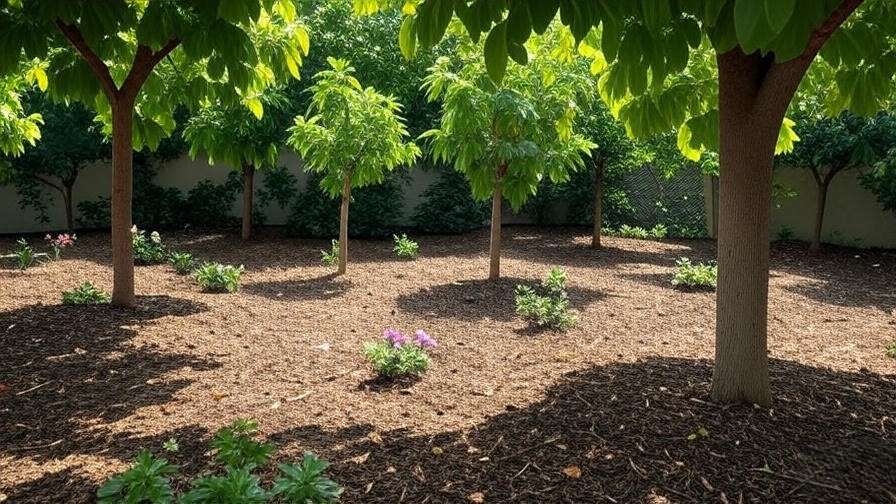
For new landscapes, consult local extension services to identify fungi-resistant species suited to your climate. These steps create a resilient ecosystem that minimizes fungal threats. 🌳
H2: FAQs About Mushroom Growth on Trees ❓
To address common concerns, here are answers to frequently asked questions about mushroom growth on trees, designed to clarify doubts and guide action.
- Q1: Are all mushrooms on trees harmful?
Answer: Not all mushrooms indicate danger. Some, like mycorrhizal fungi, benefit trees by aiding nutrient uptake. However, bracket or shelf fungi often signal internal decay, especially if paired with symptoms like soft wood or canopy thinning. Consult an arborist for a precise diagnosis. 🌲 - Q2: Can I remove mushrooms myself?
Answer: DIY removal is risky—it can spread spores or damage the tree further. For example, scraping off bracket fungi may release millions of spores, worsening the infection. Professional removal ensures safe handling and proper disposal. 🧹 - Q3: How can I tell if my tree is dying due to fungi?
Answer: Look for signs like sparse foliage, peeling bark, or a leaning trunk. Mushrooms accompanied by these symptoms, especially near the base or roots, may indicate root rot or heart rot. An arborist can confirm with diagnostic tools. 🚨 - Q4: Can mushrooms on trees affect my garden?
Answer: Some fungi produce spores that spread to nearby plants, potentially causing disease. Maintain garden hygiene by removing fallen debris and improving soil drainage to limit fungal spread. 🌱 - Q5: How do I prevent mushrooms from returning?
Answer: Focus on tree vigor through proper watering, pruning, and fertilization. Improve landscape drainage and sunlight exposure to create an inhospitable environment for fungi. Regular inspections catch issues early. 🌞
H2: Conclusion: Empowering Your Tree Care Journey 🌿
Mushroom growth on trees is more than a curiosity—it’s a window into your tree’s health and your landscape’s balance. By understanding the causes (environmental factors, tree stress, or physical damage), identifying harmful versus harmless fungi, and taking proactive steps, you can protect your trees and enhance your garden’s vitality. From assessing mushroom risks to implementing preventive care, this guide equips you with expert-backed strategies to maintain healthy forests. Regular monitoring, eco-friendly treatments, and timely professional help are your best allies. 🌳
Ready to take action? Download our free “Tree Health Checklist” to start inspecting your trees today. Share your experiences or questions in the comments below, and let’s grow healthier landscapes together! For further reading, explore resources from the International Society of Arboriculture (ISA) or your local USDA extension service. 🌸

